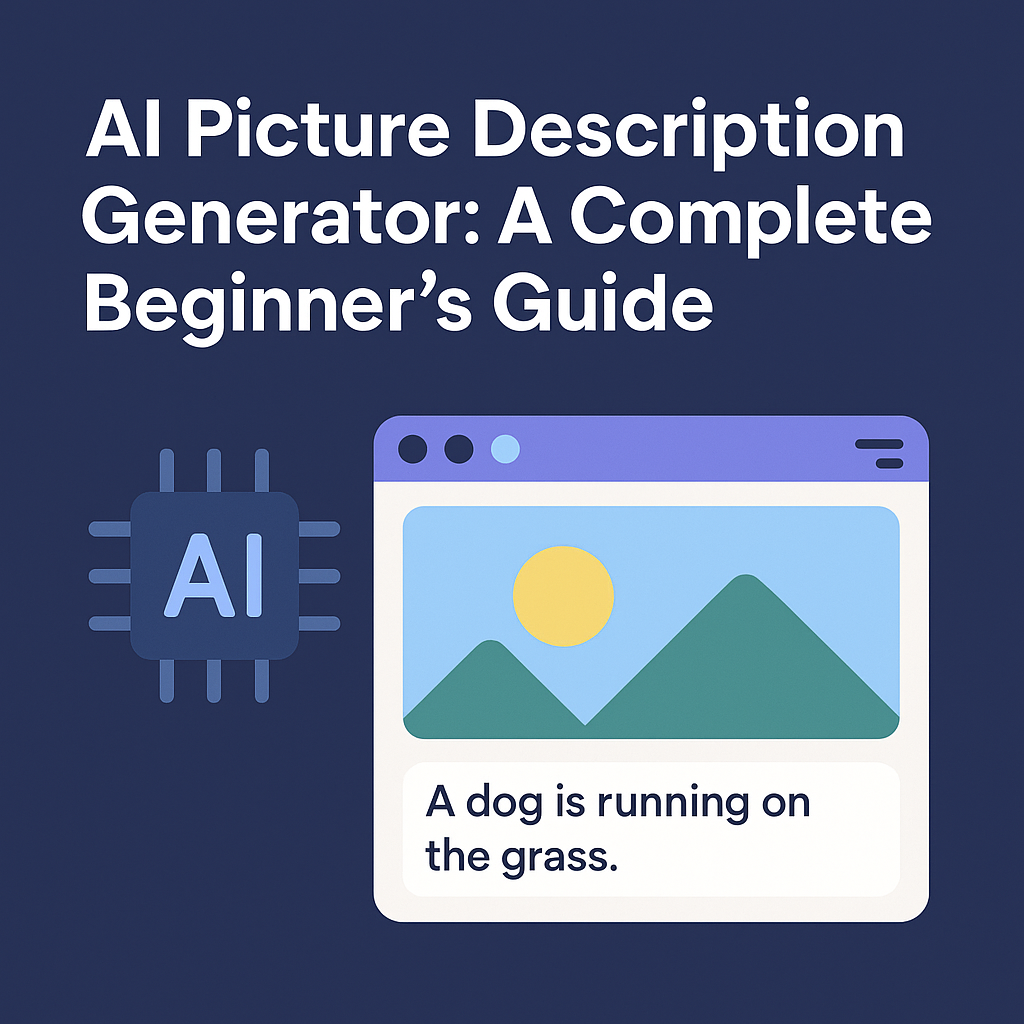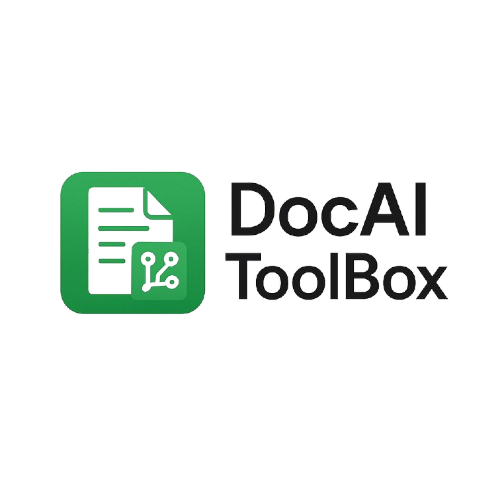AI Picture Description Generator: A Complete Beginner’s Guide

Introduction
In a world where visuals dominate the internet, from Instagram photos to e-commerce product pages, the need to describe images in words has never been more important. But writing accurate, consistent, and engaging descriptions for hundreds (or even thousands) of pictures is no easy task. This is where an AI picture description generator comes in.
An AI picture description generator is a tool that uses artificial intelligence to automatically create text captions for images. Instead of manually typing alt text, product descriptions, or social media captions, you can upload an image and let the AI generate human-like sentences describing what’s in the picture.
This beginner’s guide will walk you through everything you need to know about AI picture description generators — how they work, their benefits, limitations, use cases, and even the tools you can start using today. By the end, you’ll know exactly how to integrate these tools into your workflow, whether you’re a blogger, marketer, teacher, or just someone curious about AI.
What Is an AI Picture Description Generator?
An AI picture description generator is a software application that combines computer vision (the ability of AI to “see” and recognize objects in images) with natural language processing (NLP) (the ability to generate text). Together, these technologies allow the AI to scan an image, identify its components, understand the context, and then produce a written description that a human can read.
Think of it like a translator: the AI “reads” the pixels of an image and then “translates” them into sentences.
For example:
- Image: A golden retriever running in the park.
- AI output: “A dog is running on the grass with trees in the background.”
These systems are trained on massive datasets of images paired with text. Over time, the AI learns patterns between visual elements and the words humans use to describe them.
How Does It Work?
At a high level, AI picture description generators follow three main steps:
- Image analysis (computer vision)
The AI detects objects, people, colors, and even actions happening in the picture. For example, it might identify “dog,” “ball,” “grass,” and “running.” - Context understanding (deep learning models)
Instead of just listing objects, advanced AI can understand relationships: “The dog is chasing the ball,” not just “dog + ball.” - Sentence generation (NLP models)
The AI takes the identified elements and weaves them into a coherent sentence using natural language.
Under the hood, many modern systems use transformer models (like CLIP, BLIP, or LLaVA) that are specifically designed for vision-language tasks.
Why Use an AI Picture Description Generator?
1. Accessibility
For users with visual impairments, image descriptions (often written as alt text) are essential. AI makes it faster to add alt text to websites, documents, or presentations.
2. SEO (Search Engine Optimization)
Search engines can’t “see” images. They rely on text descriptions to understand what an image is about. By using AI to generate descriptive captions, you can improve your website’s visibility in Google Images and overall ranking.
3. Social Media Marketing
Instead of brainstorming captions, you can instantly generate engaging text to accompany posts. The AI can even adapt tones (funny, formal, or informative).
4. E-Commerce
Product listings require clear, consistent descriptions. AI saves time by generating standardized text for each product photo.
5. Education and Research
Teachers and researchers can use AI to create quick labels for datasets, making it easier to analyze images at scale.
Benefits and Advantages
- Time savings: No need to manually describe hundreds of images.
- Scalability: Works for large image collections, from websites to photo archives.
- Consistency: Produces uniform style and tone.
- Multilingual support: Many tools can generate descriptions in multiple languages.
- Integration: Some AI systems can connect directly to platforms like WordPress, Google Docs, or e-commerce stores.
Limitations and Challenges
While powerful, AI picture description generators aren’t perfect.
- Accuracy issues: Sometimes AI mislabels objects (e.g., calling a cat a dog).
- Context problems: It may describe literal objects but miss deeper meaning (e.g., “a man holding a stick” instead of “a man holding a baseball bat”).
- Bias in training data: If the datasets are biased, descriptions may unintentionally reflect stereotypes.
- Overreliance: AI should assist, not fully replace human judgment, especially in sensitive use cases.
Popular AI Picture Description Generator Tools (2025)
Here are some tools worth exploring:
- Microsoft Azure Computer Vision Captioning – A paid API for developers that automatically generates image descriptions.
- Google Cloud Vision AI – Identifies objects and labels images, with captioning capabilities.
- Hugging Face Models (BLIP, LLaVA, etc.) – Open-source models for developers and AI enthusiasts.
- DocAIToolbox – A Google Docs™ and Slides™ add-on that includes AI-powered features like image recognition, OCR, and text generation. It’s particularly useful for educators and professionals working directly inside Google Workspace (learn more here).
- Free Online Caption Generators – Various lightweight tools allow anyone to upload an image and get instant captions.
Step-by-Step: How to Use an AI Picture Description Generator
Here’s a simple workflow you can follow:
- Choose a tool (online generator, API, or add-on like DocAIToolbox).
- Upload your image or provide a link.
- Select output style (short caption, detailed description, or technical alt text).
- Review the AI output. Always check accuracy — especially if it’s for public use.
- Edit and refine. Adjust wording for tone, SEO keywords, or brand voice.
Use Cases in Different Fields
- Web accessibility: Automatically generate alt text for blogs, ecommerce sites, and educational platforms.
- Marketing: Create captions for ad creatives and social media posts.
- Education: Help students describe complex visuals, charts, or infographics.
- Healthcare: Label scans or medical images for research datasets.
- Dataset creation: Build labeled training sets for AI models.
For example, the DocAIToolbox Learning Hub features guides like How to Extract Text from Scanned Documents, which shows how AI can simplify document handling. The same principles apply to image descriptions — AI makes repetitive tasks faster, more accurate, and more accessible.
Future of AI Picture Description Generators
The field is evolving quickly. Here are a few exciting directions:
- Multimodal AI: Tools that combine text, images, video, and even audio for richer descriptions.
- Personalized styles: AI that adapts descriptions to match your brand voice or humor.
- Real-time captioning: Augmented reality (AR) glasses that describe your surroundings instantly.
- Deeper context: AI that doesn’t just describe what’s visible but understands meaning, tone, and emotion.
Getting Started as a Beginner
If you’re brand new, here’s the simplest way to begin:
- Try a free online AI picture description generator with a few test images.
- Experiment with different tones (short vs detailed captions).
- If you manage a website, start adding AI-generated alt text to your images.
- Explore integration with tools like DocAIToolbox if you work inside Google Docs or Slides.
- Always review and refine outputs — AI is fast, but your human touch ensures accuracy.
Conclusion
AI picture description generators are transforming the way we interact with images online. From improving accessibility for visually impaired users to boosting SEO and saving countless hours of manual work, these tools are becoming essential in 2025.
While they’re not flawless, the benefits far outweigh the drawbacks when used wisely. As the technology evolves, we can expect even more accurate, context-aware, and creative descriptions that make visuals more meaningful to everyone.
If you’re just starting out, the best step is to experiment with a free tool today — and if you want seamless integration into your daily workflows, explore platforms like DocAIToolbox to see how AI can simplify both picture descriptions and broader document management.

